Continuing the ongoing series of interviews with creative artists working on various aspects of movie and TV productions, it is my pleasure to welcome Autumn Eakin. In this interview, she talks about balancing the art and the craft of visual storytelling, the transition of the industry from film to digital, choosing her productions, and skills they don’t teach in film schools. Between all these and more, Autumn dives deep into her work on the recently released “The Invitation”.
Kirill: Please tell us about yourself and the path that took you to where you are today.
Autumn: My name is Autumn Eakin, and I grew up in a small town in Southwest Missouri with no exposure at all to the film industry. Sometimes if I sit back and take stock, it is a little bit bizarre that I am here. The thing that I will say – and a lot of cinematographers start this way – is that my dad was a hobby photographer. As that tool was affordable and accessible, I started by finding gratification in capturing moments, and it went from there.
By the time I was applying for colleges, I had figured out that I wanted to do something in film, and cinematography specifically made sense because of my affinity for photography. I found a liberal arts school that had a film program which isn’t that easy to find because there’s a lot of media studies in schools. I found this program at Webster University in St. Louis which is known for film and theater mostly. Not only was it offering a film production major, but you could also have emphasis in cinematography – and that’s where I went.
There’s an advantage of being in a smaller film market like St. Louis, which is about having so few batches of crews. By the time I was twenty three, I was firsting on national commercials and features, because there’s just not that many people to do them. You kind of get thrown in, and I had been trained by some good people. I got into the Union when I was twenty four back in 2005, and then I moved to New York in 2006. It was a good time to move because it was super busy at that time, and it was a few years before the writer strike. I came up in the union as a camera assistant, and when I was in St. Louis, I always gravitated towards the camera department. I probably PA’d one or two days, and I knew I didn’t want to continue doing that. I knew I didn’t want to be a producer, and I knew I didn’t want to be an AD [assistant director].
Right after moving to New York, I started day playing on an untitled Tina Fey project pretty early on, which would become “30 Rock”. I worked as a camera assistant for years on that show, and other TV shows and movies, and then started the transition to being a director of photography around 2011. Luckily, I had great mentors and people I could ask advice. And everybody told me to save up money, because I was going to go from making very good money to making no money with a lot more responsibility [laughs]. So, like everybody, you keep plugging away and you hopefully form relationships with directors and other creative people that have vision that you are drawn to. You try to listen to your gut to tell you what projects are worth no money or $100 a day or not – and people have different opinions about this.
I was trying to preserve my love for the whole process and for the storytelling. Some people would take any project and shoot anything. But I tried to do a little bit of in-between, where perhaps I wasn’t as drawn to the story, but I would see an opportunity for some darker moodier lighting. When I started, I worked with such high-caliber people that were not only great at their job, but were also decent people and treated people with respect. And on some smaller indie productions I then would encounter some of these horror stories of being abused and yelled at – things that I had never encountered until well into my career. That was an interesting part of my journey to understand how to navigate a whole new dynamic of, perhaps, young insecure directors who would act out as a way that they thought they were showing their power or authority. Part of being in the industry is definitely navigating all these different personalities on our sets.
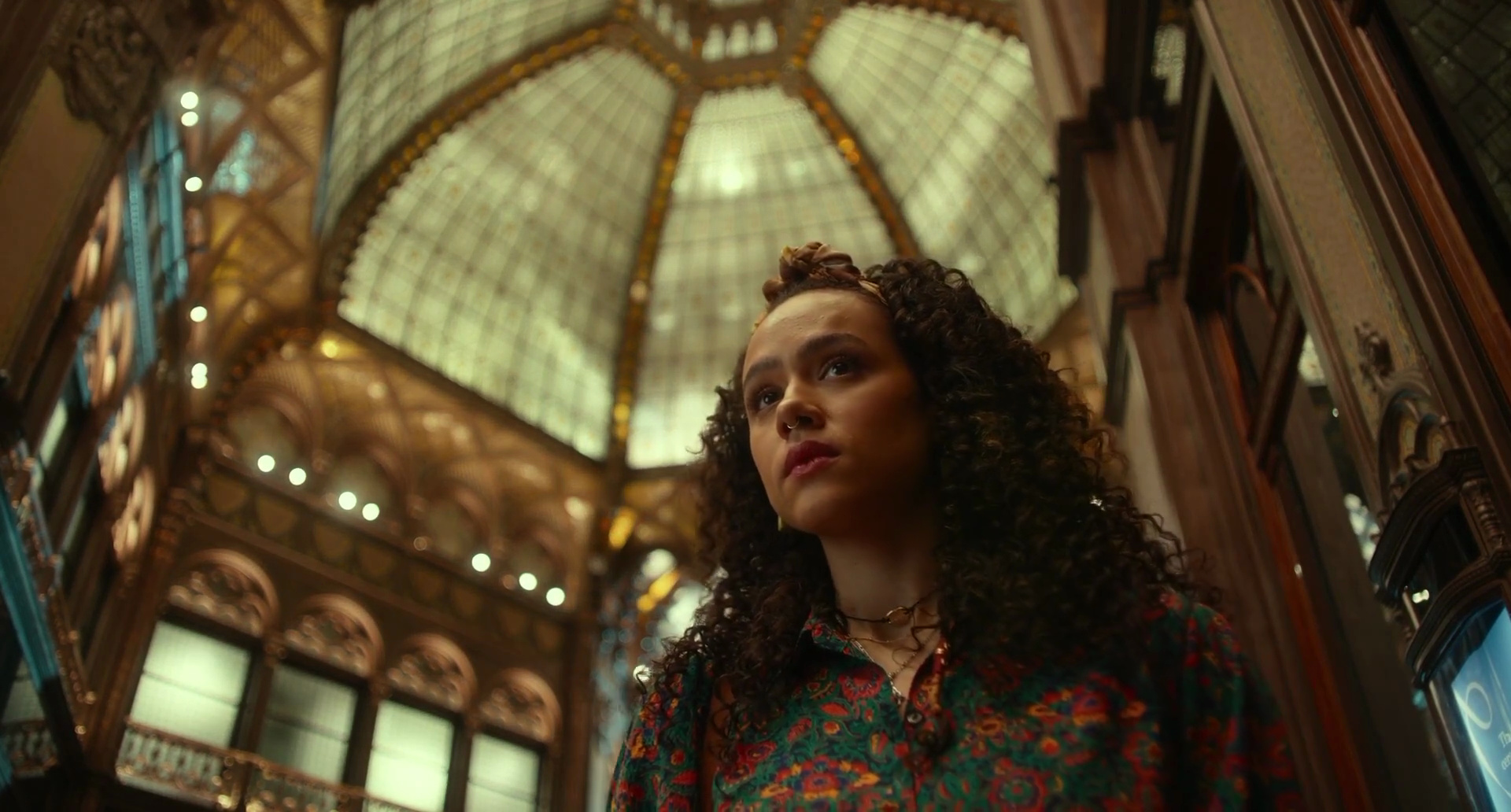
Cinematography of “The Invitation” by Autumn Eakin.
Kirill: How thick of a skin should a young person have in order to make it to the place where you are able to choose projects?
Autumn: Having a thick skin in this industry in general is very important, and it’s also key for survival. I try to remind myself that so much of everyone’s personality has nothing to do with me. All I can do is offer and have these conversations before things get stressful and intense. When I’m interacting with my director or actors, I see it as a communicative place of collaboration. My most important job is to make the actors look good or to make the director to facilitate what is in their brain.
I tell them that they don’t have to worry about the technical stuff if they don’t want to. A lot of directors feel that they have to have a deep working knowledge of which lenses and which filters do what, and of course that can always help your visual language. But one of the things that can help you succeed in this whole process is to always make the director feel like you have their back, and to use you as a tool that you are. It’s my job to take these ideas that are in your brain and put them into technical application. The best collaborations that I’ve had do just that, because I am also a storyteller.
There are DPs who pride themselves on being super technical, knowing all the sensor pixelization, CMOS and other attributes. You have to know the tools that you’re using, but ultimately you have to care about the story – and then choose the tool accordingly. A lot of times people are acting out upon their insecurities. If you know that you have nothing to do with that, if you know that your job is to make them feel supported and to execute those words on the page into a feeling, then your job is done, and the other stuff is politics that you have to navigate.
Kirill: Would you say that the debate on digital versus film – whether it’s been settled or not – straddles both the artistic expression but also the technology side of it?
Autumn: It’s very interesting, because there’s a constant lack of balance. In the beginning when the Red One camera was coming out in 2007, everyone was talking that film was dead, that film was going to go away. And now that enough time has passed, what we are shown is that everything comes in a bell curve. Yes, film did go away as a predominant medium mostly because of cost. But film is also gearing back up. Kodak has gone back into production more fully, and they have labs here. And it’s not like the technology of film stock hasn’t also advanced as the technology of digital has advanced.
And there’s just trends. It’s coming back with the younger generation that it’s cool to shoot on film. It’s retro. I don’t think it’ll ever be one or the other. One will be on top, and then it will dip and recede. It’ll ebb and flow. We as humans tend to think of things in extremes, when in reality they tend to undulate.

Model of Great Hall set for “The Invitation”, courtesy of Autumn Eakin.
Continue reading »
Continuing the ongoing series of interviews with creative artists working on various aspects of movie and TV productions, it is my pleasure to welcome Rasa Partin. In this interview, he talks about balancing the art and the craft of visual storytelling, experiencing stories on a variety of screens in our lives, how much planning and preparation goes into every shot, and the impact of Covid on the industry. Between all these and more, Rasa dives deep into his work on the recently released “The Immaculate Room”.
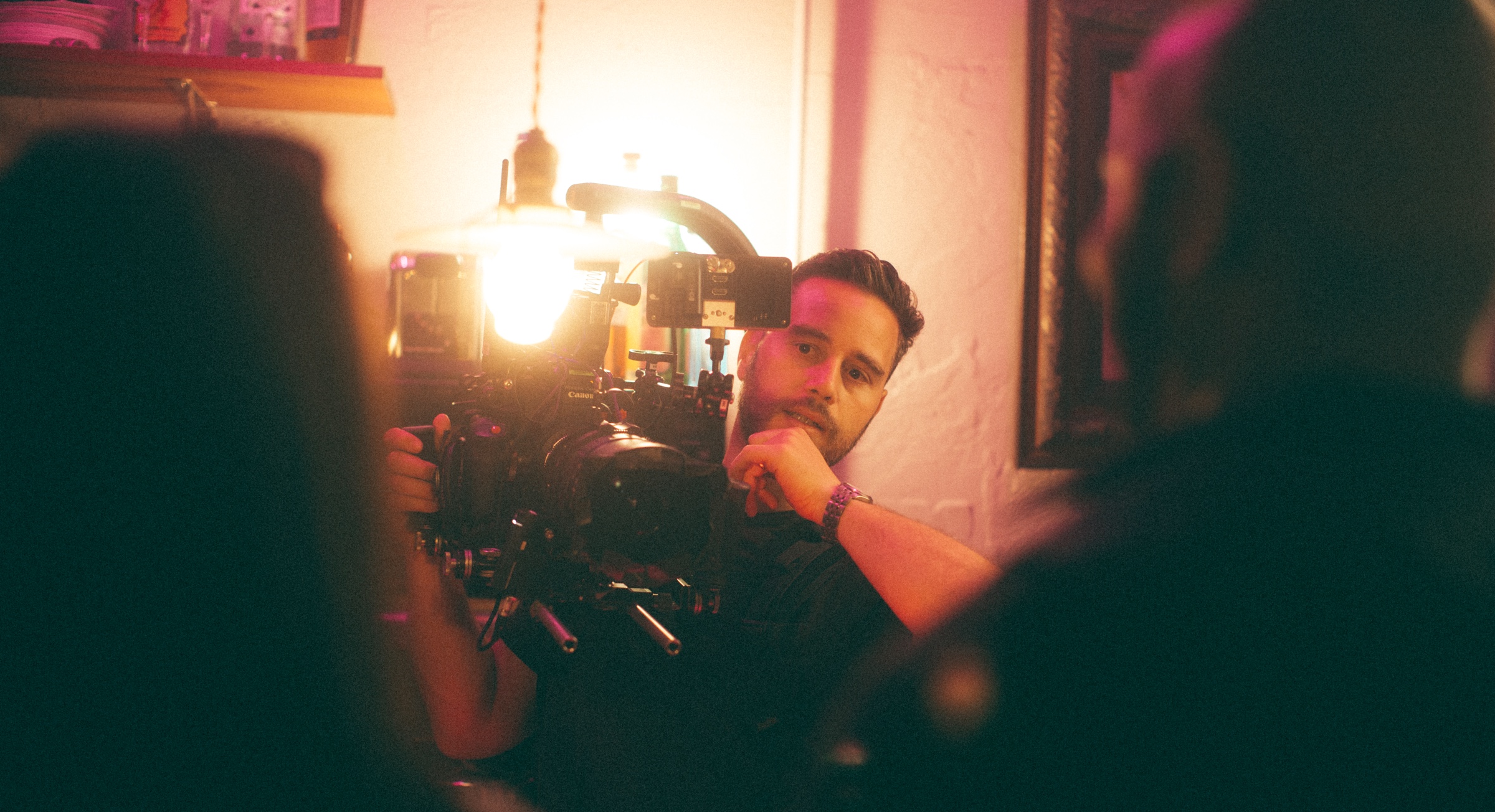
Kirill: Please tell us about yourself and the path that took you to where you are today.
Rasa: My journey is a winding one. I was raised by American parents who practiced Hinduism and yoga since the ’70s. We didn’t have TV at home, and we didn’t go to the movies. The first movie I remember seeing in a theater was “Jurassic Park” when I was thirteen.
When I was nine my parents decided to send me to a monastery boarding school in India. And my family moved there for the next seven years. Back then it would take a movie about six months for American films to get to Indian theaters. So for me seeing a movie was always a special, grand affair that was usually a memorial event. I especially remember that seeing “The Matrix” was life-changing for me. Around then I started secretly wanting to make movies when I grew up.
Returning to the US around 16 years old I started doing a computer programming degree in college. While there, I met a friend who turned me on to this car club and I met a bunch of friends there. Armed with a Hi8 video camera I went to the car club meetup, and later that night, found myself in the back of someone’s car doing donuts in the rain. I had enough computer skills to download the footage, get my hands on some editing software, put it to some music and made a 3 min YouTube video before YouTube was really a thing.
A group of us ended up working on a few feature-length car culture documentaries that we self-released and sold on DVD via a website. That opened up some international travel and adventure opportunities.
Yearning for a way to get closer to the real film industry, a friend helped me find an internship in Washington DC at a documentary production company that made History Channel shows. That lead to some documentary production jobs but eventually towards understanding that I wanted to pursue cinematography and that I should attend AFI, which I completed in 2016. It was about 14 years between that night in the rain shooting donuts and graduating AFI. Looking back, it’s been a very long journey and a ton of lucky breaks.
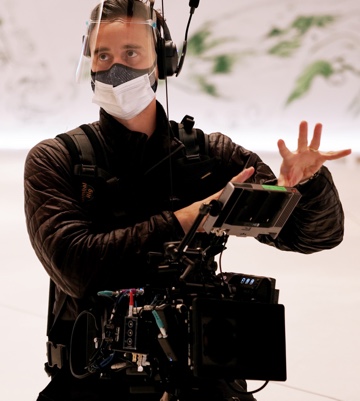 Kirill: Do you think there’s an artist in every one of us? Can anyone be an artist and should anyone be an artist? Is there such a thing as too many artists in the world?
Kirill: Do you think there’s an artist in every one of us? Can anyone be an artist and should anyone be an artist? Is there such a thing as too many artists in the world?
Rasa: I think that everyone has something artistic in them in some way, even if some people don’t look for that art. If you’re a scientist, there’s art in how you’re approaching things or the way you’re thinking about things. You’re taking a problem, and you’re trying to creatively add a human interpretation of it, and maybe seek some other way to go about it.
But, it’s something that I grapple with. Is what we’re doing really necessary in the reality of the world? I do think that people do go crazy without stories. And stories are the only way we can make sense of a lot of the ironies and inconsistencies of the world. So in that sense, storytelling is definitely imperative, and it’s going to happen no matter what. In films, in games, in books, it’s not going away.
Kirill: Expanding on this, between the art and the technical craft of it, is one more important than the other?
Rasa: Going into AFI, I thought I would be learning a lot about the technical things, like lighting, lenses, camera systems, data systems, managing a crew and other topics. We did some, but the main study there was storytelling starting from reading a script.
The curriculum then was that 90 films were made by the first year students that are in all different disciplines. You hear about the scripts, you participate in the film shoot as a DP or as a crew member, you hear about the post, and then you watch it all as a group and criticize it – all as a group. Seeing 90 short films and discussing what worked and what didn’t work – that hones and drills in the need for story.
 Kirill: If you are saying what works and what doesn’t work, how much objectivity is there in art in general? You might have 20 people in the room watching the same movie, and it works for 10 of them and it doesn’t work for the other 10. Is it the fault of the audience, or is it the fault of the storyteller when something doesn’t work? Is there even such a thing as somebody being at fault?
Kirill: If you are saying what works and what doesn’t work, how much objectivity is there in art in general? You might have 20 people in the room watching the same movie, and it works for 10 of them and it doesn’t work for the other 10. Is it the fault of the audience, or is it the fault of the storyteller when something doesn’t work? Is there even such a thing as somebody being at fault?
Rasa: Everyone is an individual with different taste. That said, you need to start your story with a good premise. It’s not just the art of the telling of the story. The premise of a story needs to have enough narrative friction, in whatever sense that is, to create a fire. And then that fire needs to be able to boil the water throughout the whole narrative. If you start with a weak premise, it’s going to be really heavy lifting to make it successful.
As a filmmaker, you step back and think on what the premise of this movie is. Is it a worthy story to tell, to take up someone’s two hours?
Continue reading »
Continuing the ongoing series of interviews with creative artists working on various aspects of movie and TV productions, it is my pleasure to welcome Anka Malatynska. In this interview, she talks about her passion for photography, the transition of the industry from film to digital, differences between feature films and episodic shows, and the impact of Covid on the industry. Between all these and more, Anka dives deep into her work on the recently released “Pretty Little Liars: Original Sin”, as well as a sneak preview into the upcoming “The Listener”.
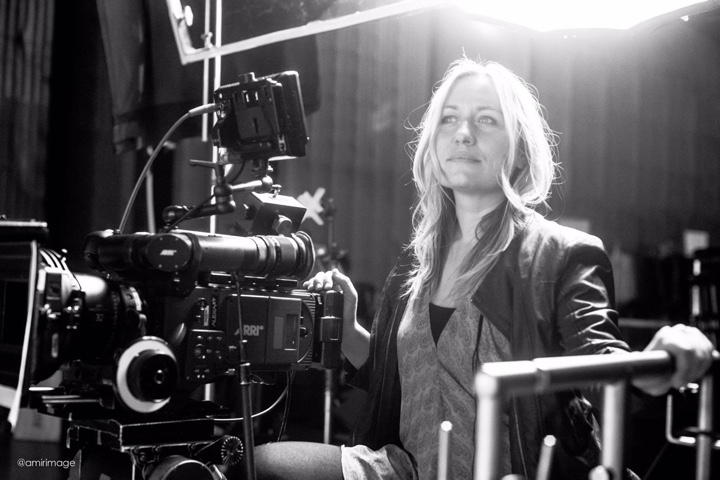
Kirill: Please tell us about yourself and the path that took you to where you are today.
Anka: My name is Anna Malatynska, and I’m a Polish-born American-raised cinematographer. When we moved to US, Poland was still a communist country. I have these early memories of the National Geographic magazine with color pictures sent to us from relatives from the Western world, and those pictures opened up this world. My father was a Himalayan mountain climber who got to travel all over the world, even though we were locked in a communist country, and he brought a lot of ideas and pictures.
For me it was the pictures that resonated as a vehicle to be able to move beyond my immediate world. The first thing I remember was wanting to know as much about this planet, and the people, and the different ways that you can live, and photography looked like the avenue. I was involved in shooting and developing my own pictures by the time that I was thirteen. And by way of that I discovered acting. I did local theater productions that lead to a commercial agent. It was there I got a glimpse into the film industry and I thought that it was a horrible place. So I moved away from it, and got into math and science.
Somehow that journey of acting, storytelling, pictures, math and science deeply translates into the art and craft of cinematography. As a cinematographer, you are using all of those parts in your work every day. In college, again, I was enamored with storytelling and got back into photography, and all of that led me back to cinematography.
I’ve been doing it ever since. I started working in camera departments immediately after graduating from NYU. I knew that image making was where my soul was guiding me too. It’s been a lifelong task.

Cinematography of “Monsterland” by Anka Malatynska.
Kirill: Would you say that you straddled both sides of the film to digital transition? Do you feel that we have lost something with a gradual decline of film as the medium?
Anka: I was raised as a filmmaker right in the transition between film and digital. The year that I was doing my student films at NYU was the last year that they used an editing Steenbeck where we cut the negative. Those were some of the last years that we were using 16mm film.
I didn’t go from college to graduate school straight away. I worked for several years in the industry in between, and when I did go to the American Film Institute, most of our work there was already digital.
If you want to be a cinematographer or a photographer, it’s important to understand photography at its elemental level. Film is the really elemental level. There’s an element about film that’s tactile, and I’m a tactile visual learner. It’s easier to get concepts in my body that are rather abstract, be it the zone system or how to see light the way a camera sees the light. It’s helpful to go through the physical process of developing a negative and rendering a print that lands these concepts deep in the brain. Start with Black and White film photography, and once you know the basics and have that background, you can keep up with however the technology changes, because in the end, the basics are the same.
Now we can talk about what has been gained and what has been lost. What has been gained is that there are people who have access to cameras who in the past would not have been able to access storytelling. We gain a lot of the world from that. In the end, all of human culture at the baseline is about storytelling. The more varied the people that can tell and express their stories are, the more interesting of a society we have, and the more ideas we can have.
On the other hand, maybe not all of these stories are compelling. You might have a great actor in the film, but there’s an absence of a cinematographer, big gaps in the visual language of it. Sometimes you watch something, and it looks like a storyboard for a film, an outline or a concept for something that could be executed better. This is the other side of everybody being able to get a camera and calling themselves a cinematographer.
We lost some things, but we also gained important things through what has been more of a democratization. Filmmaking is now more accessible at a financial level.
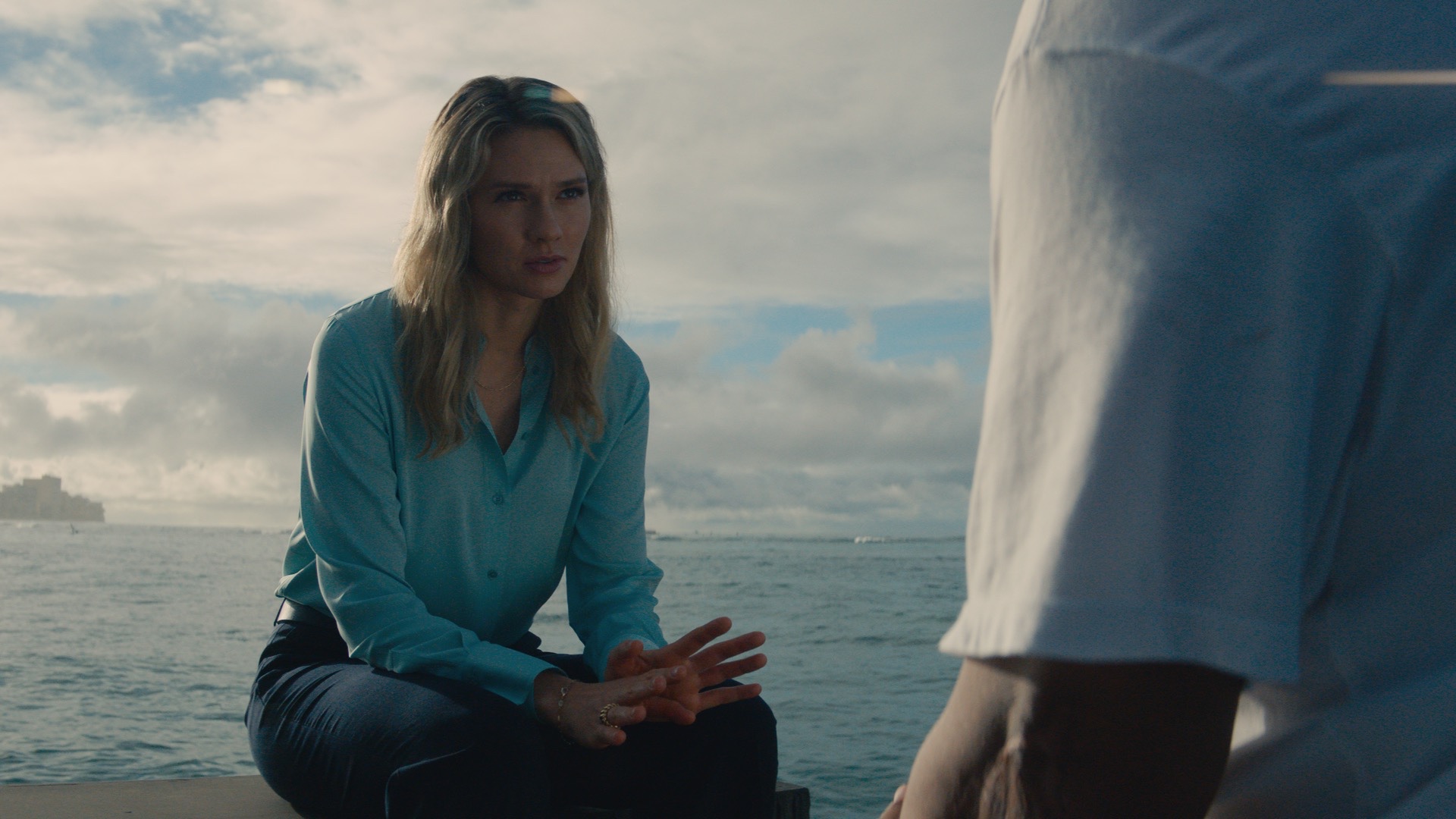
Cinematography of “NCIS” by Anka Malatynska.
Kirill: Looking at the balance between the art and the technology of it, would you say that a great cinematographer needs to have both of these? Can you be just an artist, or just a technician? Do you have to be both?
Anka: One hundred percent you have to be both. One doesn’t really exist without the other. It is an art and it is a craft. And like any craft, you have to be physically grounded in that craft. That’s where the intuitive artistic decisions will come from later on down the line. You have to work without the stress of thinking about how to achieve a certain thing.
You have to have that bag of tricks. In filmmaking, no matter how prepared you are, you will get a lot of curveballs and a lot of things will not necessarily go as planned. You’ll have to adjust the plan that you planned for, and still tell the story, and still get the scene, and still make the day.
Kirill: Do you think that both art and craft can be taught, or is the artistic side something that one is born with?
Anka: I believe the human condition has a great propensity for art and imagination. We dream up the life that we live. We make up the societies that we then participate in, and that takes imagination and artistry.
When you watch little kids, you see how deep in their imaginations they are, and we continue that throughout our lives. As we grow, we gain the ability to truly express it and put it into the world at a physical level. I think we all begin as artists. Whether we learn to execute that art and whether we feel empowered enough to gain the skills to be able to execute the art – that’s more of the question. We all have the capacity, but can we get the training, the inspiration, the encouragement, and the idea to pursue such a thing?
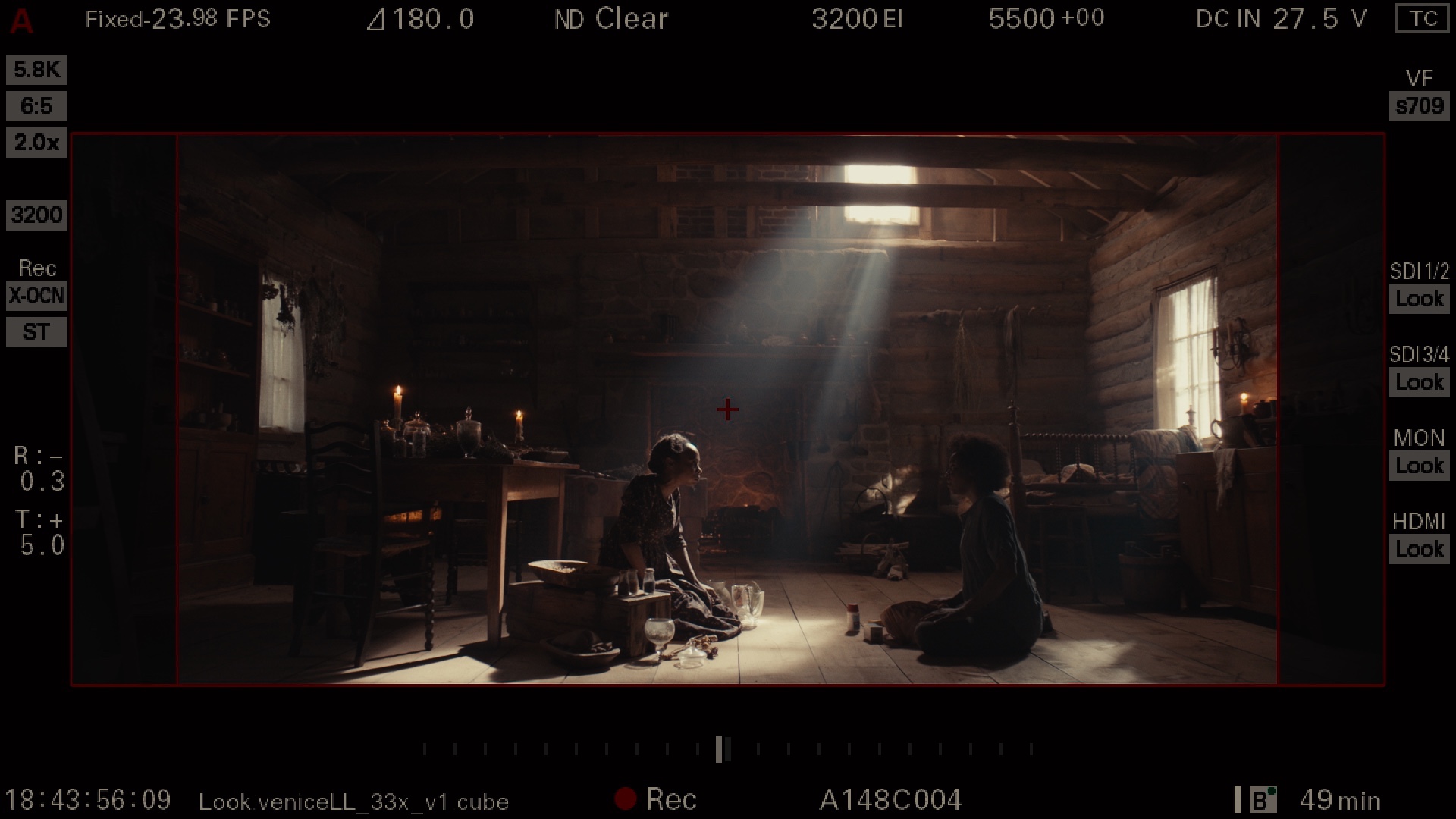
Cinematography of “The Kindred” by Anka Malatynska.
Continue reading »
Continuing the ongoing series of interviews with creative artists working on various aspects of movie and TV productions, it is my pleasure to welcome Victoria Paul. In this interview, she talks about changes in the way stories are made in movies and television over the last few decades, the ever-raising quality and expectations bar from the viewers, the impact of Covid on the industry, and the advice she would give to people just starting out in it. In between all these and more, Victoria dives deep into her work on “A League of Their Own”.
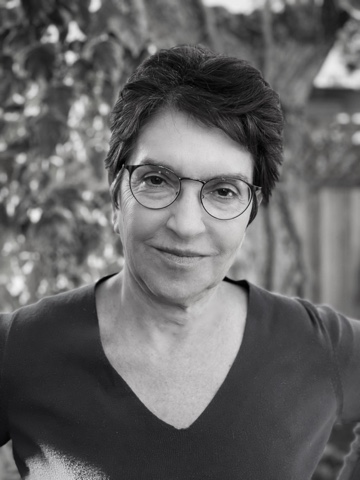 Kirill: Please tell us about yourself and the path that took you to where you are today.
Kirill: Please tell us about yourself and the path that took you to where you are today.
Victoria: I started designing for theater, working as an assistant for some terrific designers on Broadway and designing myself off Broadway. I lived in New York, and I thought that was my path. It’s a rich collaborative experience, and in a way it’s more temporal than working on a movie because it’s immediate, it happens every night. It’s a genuine family that gets formed there.
As an assistant designer, the equivalent to an art director in the film world, I was dealing with a lot of the technical and logistical parts, mounting the show and making that train run on time. At some point I was contacted by a friend who told me that a film was coming into New York which needed a draft person / assistant art director. That was “The World According to Garp”, and the production designer was Henry Bumstead, who’s a legend in American film design. Doing that film was a transfomative experience. It was a big learning curve, not technically because those skills translate, but about what the world of film was.
Kirill: How has that experience changed for you over time. If you go back to early ’80s and then jump straight into 2022, would it be a big shock, or is it based on the same building blocks and just the technology is different?
Victoria: The way we make movies and television has changed in a couple of fundamental ways. I don’t think you can say it’s just the technology that’s different, because the technology is fundamental to what we do. We’re artists, but we’re also craftsmen, so our toolkit is how we function.
The process now is much faster. We used to have many weeks of prep, and that’s all been shortened. And it’s been shortened because we can turn visuals out quicker, because of how we draw now, because of how we pre-vis. We can get decisions quicker because we can turn out pre-vis and 3D models, and show directors what they’re going to get sooner. The technology helped speed up the train, but what was lost is maybe some of the time we would spend ruminating and talking and thinking. Back then it was a harder to visualize as quickly. I think what the technology has done is let us communicate better.
I can take a ground plan or a 3D model of something and show it to a cinematographer, and we can have a chat about where windows are, or where doors are, or where lighting sources are, and get that sorted out quickly.

Concept art and set photo of Beyer Field outfield on “A League of Their Own”, courtesy of Victoria Paul.
Kirill: When I talk with cinematographers, there’s the big topic of the industry transitioning from film to digital, and a lot of people miss the physicality of film as medium. Is there such a big thing that in your part of this industry that would be perhaps equivalent of that?
Victoria: Maybe younger set designers and assistant art directors may not miss it, but when I started, all drawing was hand drawing – and it was beautiful. The drawings themselves were wonderful objects. And the great thing about the drawings was that you could always tell who did them. They had the mark of the maker.
Although the information is the same and the layout is the same, you could tell by the style of drawing, the style of lettering, the size of lettering, the kind of font they use. You could immediately tell who drew each piece.
And now we’re in a digital art department where one set designer can start on something, build a ground plan and some elevations for me, and then I can give it to someone else to do some modifications or a quick director’s plan, and they exchange it, and when we look at it, it’s not clear whose iteration was the last one. In some way, it has lost personality. But it’s a small quibble, and certainly not as quite as big a discussion as the look of film versus the look of digital.
Kirill: What used to be special effects is now done digitally with VFX, you have new technologies available in different departments, and the world of visual storytelling itself is shifting with the advent of streaming platforms. Do you find that the boundaries of what it is that you’re responsible for are shifting?
Victoria: I don’t see a lot of difference between film and episodic in terms of how we approach the work these days. The big difference is in how many weeks of prep you have, and how much money you have – which translates into what you can build, and also into how big your art department can be. It’s not so much about film and TV, but rather about where’s your overall budget.
In terms of what the art department and myself as a production designer are responsible for, I don’t think that has changed very much. What has happened is that we have more tools at our disposal. There has always been a big conversation with special effects. If something is getting blown up, or a vehicle is going to crash into my building, I have to know what special effects needs from us to make it work. We still need to design and build it. That has not changed. I just wrapped a show called “Twisted Metal” and it’s all about vehicular mayhem. We were in constant discussions with the effects people on how to achieve things. But no matter where the effects take over, we’re still designing it.
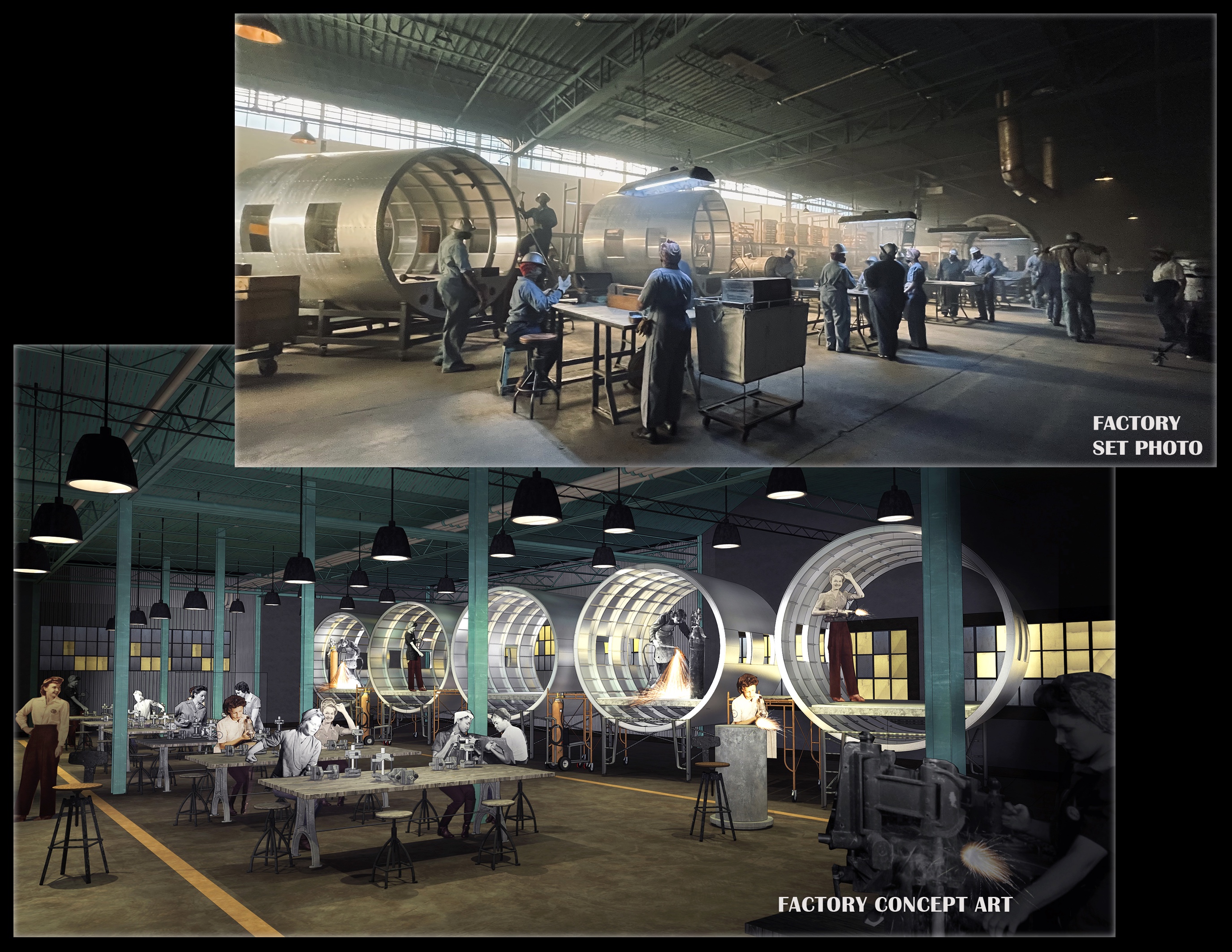
Concept art and set photo of the factory floor on “A League of Their Own”, courtesy of Victoria Paul.
Continue reading »
![]()
![]()